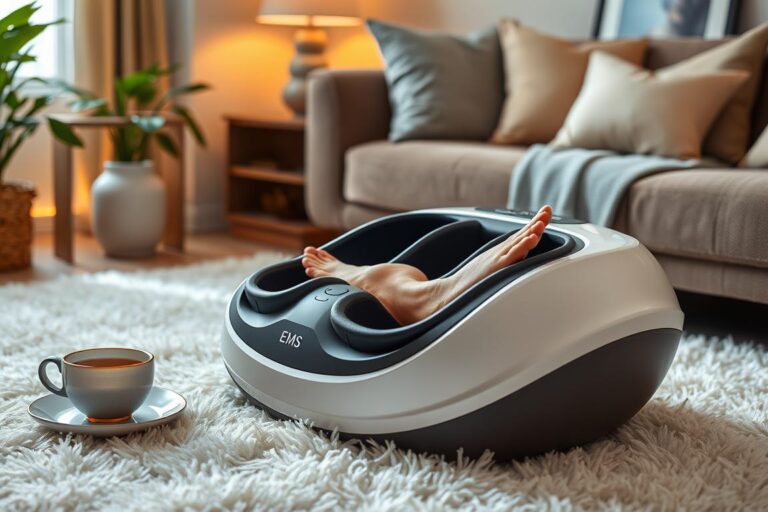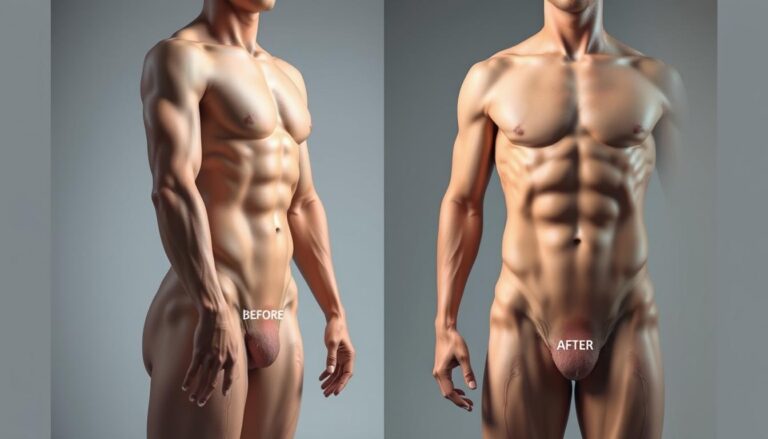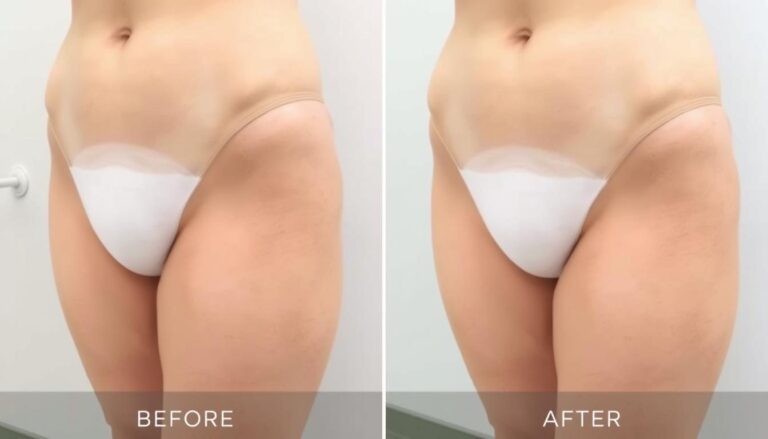Best Plantar Fasciitis Men’s Shoes 2024

It was just another Saturday morning when a weekend warrior hit the pavement, ready to tackle a new trail. But after just a few strides, he felt a sharp pain shooting through his heel. This pain was due to the shoes he had grabbed from the closet, which were not good for his plantar fasciitis.
This experience is common; many men suffer from plantar fasciitis because of the wrong shoes. In fact, 83.2% of people with plantar fasciitis wear shoes that are not right for them. Finding the right shoes can really help with the pain.
In 2024, men with plantar fasciitis need shoes that are comfortable and supportive. Shoes like the Brooks Ghost 16, Asics Gel Kayano 31, and Hoka Bondi 8 can help ease heel pain and improve performance. We will guide you on how to understand symptoms and find the best shoes for plantar fasciitis men. We aim to help you find comfortable shoes that fit your lifestyle.
Table of Contents
Understanding Plantar Fasciitis
Plantar fasciitis is a common issue that happens when the plantar fascia gets inflamed. This tissue is a thick band that links the heel to the toes. It helps keep the foot’s arch and works well during activities.
This condition often causes heel pain that can really impact daily life. Knowing what causes plantar fasciitis helps in managing it better. Starting a new exercise, doing repetitive tasks, or standing a lot on hard surfaces can raise the risk. Wearing shoes that don’t cushion well can make it worse.
Getting advice from trusted sources can help find the right treatment. Making simple changes in your life, doing stretches, and wearing the right shoes can help ease the pain. For more info on health issues in young adults, check out this helpful resource.
| Condition | Footwear Solutions | Common Symptoms |
|---|---|---|
| Plantar Fasciitis | Arch Support, Cushioning | Heel Pain, Stiffness |
| Flat Feet | Wide Toe Box, Stability | Fatigue, Pain in Feet |
| Metatarsalgia | Shock Absorption | Pain in Ball of Foot |
Learning about plantar fasciitis is key to easing heel pain and making your feet more comfortable. By choosing supportive shoes, you can greatly improve your life if you have this condition.
Symptoms of Plantar Fasciitis
Plantar fasciitis affects about two million people in the U.S. each year. It’s important to know the symptoms to get help early. People often feel sharp pain at the heel’s bottom. This pain is worse in the morning or after sitting or standing a lot.
Common signs include:
- Intense heel pain upon waking
- Foot discomfort when standing or walking
- Soreness in the midfoot area
- Increased pain after physical activity or at the end of the day
About half of those with plantar fasciitis may get a heel spur. This happens because the plantar fascia is tight. But, it usually doesn’t make the pain worse. The pain comes from the plantar fascia getting strained and inflamed.
Knowing these symptoms is key if you’re feeling foot pain. Since 80% of people get better without surgery, acting early is crucial. If home treatments like icing or over-the-counter meds don’t help, you should see a doctor. Being aware of these signs can help manage this common foot issue better.
Importance of Choosing the Right Footwear

Choosing the right shoes is key to easing plantar fasciitis pain. The right shoes can make a big difference in comfort and foot health. Sadly, 83.2% of people with plantar fasciitis wear the wrong shoes, while only 16.8% choose the right ones. This shows how important it is to pick the right shoes.
Many people suffer from foot problems because of bad shoes. For example, 82.2% wear shoes with low heels, and over half lack arch support and cushioning. This leads to a lot of heel pain, making everyday tasks hard. That’s why picking the right plantar fasciitis shoes for men is crucial.
Wearing comfortable shoes helps support your feet, lowers the chance of making heel pain worse, and helps you get better. Studies show that 82% of people with plantar fasciitis felt better with supportive shoes. Also, 70% saw improvements with custom orthotics. Shoes with these features are a must for anyone with foot pain.
| Footwear Type | Common Features | Impact on Pain Levels |
|---|---|---|
| Inappropriate Shoes | Minimal heel height, hard insoles, no arch support | Increased heel pain, limitations in daily activities |
| Supportive Shoes | Cushioning, built-in arch support, proper heel height | Relief from pain, enhanced comfort |
| Orthotics | Custom arch support, shock absorption | Significant reduction in heel pain |
Understanding the importance of choosing the right shoes helps people manage plantar fasciitis better. Making the right shoe choices is essential for foot health and a better life.
Features to Look for in Plantar Fasciitis Men’s Shoes

Finding the right shoes is key for those with plantar fasciitis. Knowing what to look for in plantar fasciitis shoes can make a big difference. Here are some important features to consider when searching for comfortable shoes for men.
Cushioning and Shock Absorption
Good cushioning is crucial for easing plantar fasciitis pain. Look for shoes that absorb shock well to lessen heel impact while walking. Shoes with extra cushioning not only make your feet feel better but also protect the plantar fascia from further strain.
Arch Support and Stability
Strong arch support is a must for plantar fasciitis. Shoes with good arch support keep your foot in the right position and lessen stress on the plantar fascia. Stability is also key to prevent your foot from moving too much during activities. This reduces the chance of pain and injury.
Wide and Stable Soles
For balance and support, choose shoes with wide and stable soles. These features help keep your posture right and give you a solid base. This is especially good for people who often overpronate or have other foot issues. Shoes with these features make walking more comfortable for those with plantar fasciitis.
Top Rated Men’s Shoes for Plantar Fasciitis
Finding the right shoes is key for men with plantar fasciitis. Many brands stand out for their comfort, support, and durability. Here are some top picks for men’s shoes that boost comfort and support foot health.
Brooks Ghost 16
The Brooks Ghost 16 is loved for its mix of cushioning and support. It fits well, fitting many foot shapes. The breathable mesh upper keeps feet cool all year.
This shoe is a top choice for men with plantar fasciitis. It makes moving around easy and keeps pain away.
Asics Gel Kayano 31
The Asics Gel Kayano 31 is known for its shock absorption. It has gel technology to lessen heel and arch pressure. It comes in various sizes, including for wider feet.
Many find it helpful for easing plantar fasciitis pain. It’s among the best shoes for men with this issue.
Hoka Bondi 8
The Hoka Bondi 8 is known for its maximum cushioning. It spreads pressure evenly, helping those in pain. It’s light and has a strong rubber sole for support and grip.
Many suggest it for those focusing on foot health. It’s seen as a top choice for plantar fasciitis.
| Shoe Model | Cushioning Level | Arch Support | Fit Options | Durability |
|---|---|---|---|---|
| Brooks Ghost 16 | High | Excellent | Medium, Wide | Durable |
| Asics Gel Kayano 31 | Moderate to High | Great | Wide Options | Durable |
| Hoka Bondi 8 | Maximum | Good | Standard | Very Durable |
Best Shoes for Plantar Fasciitis Men – Sneaker Options
Finding the right sneakers for plantar fasciitis men can greatly improve comfort and support during physical activities. These shoes not only alleviate foot pain but also enhance stability and allow for an active lifestyle. Comfort is key, and men’s sneakers specifically designed for plantar fasciitis should feature elements such as adequate cushioning, arch support, and a roomy toe box.
The Asics Gel-Venture 9 is a top choice, with a perfect 5/5 rating. It’s great for neutral runners, offering a 10-millimeter drop and weighing 10.6 ounces. It also has a soft, springy footbed for a pleasant running experience.
The Brooks Ghost 15 is another excellent option, with a 4.8/5 rating. It’s ideal for marathon runners, weighing 10.1 ounces and having an 11-millimeter drop. This shoe provides great support for those with knee pain.
The Mizuno Wave Inspire 19 is known for its excellent cushioning, earning a 4.7/5 rating. It has a 12-millimeter drop and weighs 10.7 ounces. This shoe is perfect for runners needing more stability.
For runners with high arches, the New Balance Fresh Foam X 880v13 is a great choice, with a 4.9/5 rating. It’s light, weighing only 10 ounces, and has a 10-millimeter drop. This shoe fits both wide and narrow feet well, making it one of the best options for plantar fasciitis.
| Sneaker | Rating | Drop (mm) | Weight (oz) | Best For |
|---|---|---|---|---|
| Asics Gel-Venture 9 | 5/5 | 10 | 10.6 | Neutral Runners |
| Brooks Ghost 15 | 4.8/5 | 11 | 10.1 | Marathon Runners |
| Mizuno Wave Inspire 19 | 4.7/5 | 12 | 10.7 | Cushioning |
| New Balance Fresh Foam X 880v13 | 4.9/5 | 10 | 10 | High Arches |
Adding these plantar fasciitis sneakers to your routine can help keep your feet healthy. It lets you stay active without pain. Choosing the right shoes for plantar fasciitis can greatly improve your overall well-being.
Men’s Orthopedic Shoes for Plantar Fasciitis
Men’s orthopedic shoes for plantar fasciitis are made to ease pain and support those with this foot issue. They come with special features for better comfort and stability. These shoes let you pick from many styles for any event. Picking the right orthopedic shoes is key to handling plantar fasciitis and boosting foot health.
Features of Orthopedic Shoes
When choosing men’s orthopedic shoes for plantar fasciitis, look for these important features:
- Custom Arch Support: Key to easing pressure on the plantar fascia.
- Cushioned Insoles: Absorb shock to lessen impact when walking or standing.
- Breathable Materials: Keep feet dry and comfy, cutting down on blister risk.
- Wide and Stable Soles: Give better stability and stop the foot from rolling.
- Removable Footbeds: Let you adjust arch support to fit your needs.
Recommended Brands
Many brands are known for their orthopedic footwear for men with plantar fasciitis, such as:
- Orthofeet: Offers designs that focus on comfort and support.
- Vionic: Provides stylish options without losing out on health benefits.
- Drew Shoe: Has a variety of sizes and widths for a perfect fit.
- Apex: Makes durable shoes with a big focus on foot health.
| Brand | Key Features | Size Range | Width Options |
|---|---|---|---|
| Orthofeet | Arch support, cushioned insoles, breathable | 7 to 14 | Medium, Wide, Extra Wide |
| Vionic | Stylish design, adjustable straps, removable footbeds | 7 to 14 | Medium, Wide |
| Drew Shoe | Extra depth, arch support, cushioned soles | 7 to 14 | Medium, Wide, XXX-Wide |
| Apex | Durability, stability, supportive | 7 to 14 | Medium, Wide, Extra Wide |
Buying quality men’s orthopedic shoes for plantar fasciitis helps improve foot health and comfort. With many options, it’s important to pick shoes that meet your needs and support your daily activities.
Comfortable Men’s Shoes for Plantar Fasciitis
Finding the right shoes for plantar fasciitis can be tough. There are many comfortable men’s shoes for plantar fasciitis out there. It’s key to look for features that boost comfort and support. Many men are looking for soft and supportive shoes to ease foot pain.
When picking shoes, fit and flexibility matter a lot. You need shoes that fit well but are still comfy. Look for arch support and cushioning to spread your weight evenly. Brands like Vionic and Orthofeet are known for their great support.
Here are some tips for choosing comfortable men’s shoes for plantar fasciitis:
- Arch Support: Choose shoes with strong arch support to ease foot stress.
- Cushioning: Soft insoles with good cushioning help absorb shock and make moving easier.
- Wide Toe Box: A big toe box lets your toes move freely and prevents cramping.
- Flexibility: Shoes that bend well in the midfoot area support better and improve mobility.
There are 185 male shoe options available, with sizes from 5 to 20. You can find them in many colors like black (158 options) and brown (73 options). Width options include Extra Wide (XW) and Medium (M). Brands like New Balance and Hoka have models made for plantar fasciitis.
For men with plantar fasciitis, picking soft and supportive shoes can make a big difference. Knowing about the right footwear can help with foot health. Researching and choosing wisely can ease plantar fasciitis symptoms and boost your well-being.
For more health tips, visit this link.
Best Plantar Fasciitis Support Shoes Men
For men with plantar fasciitis, finding the right shoes is key. Many plantar fasciitis support shoes for men are now available. They are made to ease pain and give the support needed. These shoes have special design features, like strong heel and arch support.
These shoes come in many colors like black, blue, brown, gray, green, tan, and white. They fit sizes 7 to 14, with half sizes too, for a great fit. The materials include canvas, leather, mesh, rubber, textile, and foam, making them comfy for various activities.
You can find shoes for summer, autumn, winter, and spring. This means you can stay comfortable all year. Over 51,538 ratings show how well these shoes work in easing pain. The ATOM shoe is especially praised for helping with plantar fasciitis symptoms.
Customers stick with brands like KURU, made for those with plantar fasciitis. Many say they feel much less pain and live better. This shows how important it is to pick supportive shoes. Prices vary, so you can find good quality shoes that help with symptoms for a long time.
In short, when looking for plantar fasciitis support shoes for men, look for features like anatomical insoles for better arch support. The right shoes not only help your foot health but also make everyday life more enjoyable.
Comparison of Popular Plantar Fasciitis Men’s Shoes
Finding the right shoes is key for those with plantar fasciitis. This guide looks at comfort, durability, and value. It helps consumers pick the best shoes for their needs.
Comfort Level
Comfort is crucial for plantar fasciitis sufferers. Shoes with good cushioning and a heel stack height over 30mm help. New Balance Walking Shoes (model# mw928wt) are great for comfort. They offer both softness and support to ease foot pressure.
Durability and Longevity
Shoes need to last a long time. New Balance shoes can last about 300 miles, making them a smart buy. Rockport shoes are cheaper but might not last as long. The choice depends on how much you use them and what you prefer.
Price vs. Value
Price and value are important. Custom orthotics can cost about $80 but help with plantar fasciitis. Chaco sandals are also good for foot pain relief. It’s key to look at how well these shoes support the arch and heel.
| Shoe/Brand | Price | Expected Lifespan (miles) | Key Features |
|---|---|---|---|
| New Balance (mw928wt) | $124 | 300 | Cushioning, Arch Support |
| Rockport | $62 | Variable | Budget-friendly, Lightweight |
| Chaco Sandals | $100 | Variable | Supportive, Breathable |
Comfort and cost matter when choosing plantar fasciitis shoes. The best shoes for men depend on personal comfort and health needs. For more on wellness, check out men’s health matters.
Additional Tips for Selecting Shoes for Plantar Fasciitis
Choosing the right shoes is key for those with plantar fasciitis. Here are some tips from a buying guide for picking the right shoes:
- Seek Professional Fitting: Get your feet measured by a pro for a perfect fit and good support.
- Consider Individual Foot Shape: Think about your foot’s arch type—flat, high, or neutral—to pick the right shoes.
- Prioritize Arch Support: Choose shoes with strong arch support. Drew Shoe and Orthofeet offer great options.
- Emphasize Cushioning: Shoes with lots of cushioning in the heel and flexibility in the front can help ease pain during daily tasks.
- Explore Width Options: Many shoes come in Extra Wide and Medium widths, so you can find ones that fit your foot well.
Looking at product features is also crucial. Here’s a quick guide to what to consider:
| Feature | Description | Importance |
|---|---|---|
| Arch Support | Good support helps ease pressure on the plantar fascia. | Key for feeling better. |
| Shock Absorption | Sole cushions reduce impact when walking or running. | Very important for comfort all day. |
| Removable Footbed | Let you add custom orthotics. | Helps with support tailored to your needs. |
Keep these tips in mind and use the buying guide to make better choices. Regularly check and replace your shoes and do stretching exercises to help manage the condition. Talk to shoe experts for the best advice.
Maintaining and Caring for Your Plantar Fasciitis Shoes
Proper shoe maintenance for plantar fasciitis is key to making your shoes last longer and keep supporting you. Cleaning and checking your shoes often helps spot wear early. This is vital for managing plantar fasciitis symptoms.
Here are important steps to care for your supportive shoes:
- Regular Cleaning: Use a damp cloth to wipe off dirt and moisture. For deeper cleaning, follow the manufacturer’s instructions.
- Inspect for Wear: Look at the soles and insoles for signs of wear. Shoes in good shape keep your arches supported.
- Replacing Shoes: Shoes should be replaced every six months, based on how much you use them. Watch for any discomfort or fit changes.
- Using Insoles: Think about using insoles made for plantar fasciitis. They add extra cushioning and support.
Checking your shoes well is part of shoe maintenance for plantar fasciitis. If you feel pain, it might mean you need new shoes. Not replacing worn shoes can lead to plantar tears or heel spurs. These are painful and can make it hard to move.
| Caring Step | Importance |
|---|---|
| Regular Cleaning | Prevents buildup and maintains material integrity |
| Inspect for Wear | Ensures proper support and alignment |
| Replacing Shoes | Reduces risk of injury caused by inadequate footwear |
| Using Insoles | Enhances comfort and arch support |
Following these tips can greatly help in managing plantar fasciitis. It also boosts your foot health. Always pay attention to how your shoes feel when you’re active. If you’re unsure about fit or support, don’t hesitate to get advice from experts.
When to Consult a Podiatrist
If you’re still in pain even with the right shoes for plantar fasciitis, it’s time to see a podiatrist. Shoes can help a lot, but they can’t fix everything. If you’re still feeling pain, swelling, or having trouble with everyday tasks, you should get help.
Many people wear shoes that don’t fit right, which can cause foot problems. If stretching and supportive shoes don’t help, a podiatrist can offer better advice. They can suggest the right shoes, talk about insoles or custom orthotics, and help with exercises to ease the pain.
Ignoring plantar fasciitis symptoms can lead to bigger problems like heel spurs or a torn fascia. This can make moving around harder. Getting help early is key to keeping your feet healthy and finding ways to manage your condition.
FAQ
What are the best plantar fasciitis men’s shoes in 2024?
How can I tell if I have plantar fasciitis?
Why is choosing the right footwear important for plantar fasciitis?
What features should I look for in plantar fasciitis shoes for men?
Are there specific sneaker options that are recommended for plantar fasciitis?
What are men’s orthopedic shoes for plantar fasciitis?
How should I maintain my plantar fasciitis shoes?
When should I consult a podiatrist about my foot pain?







